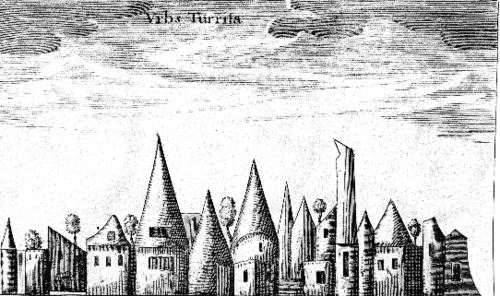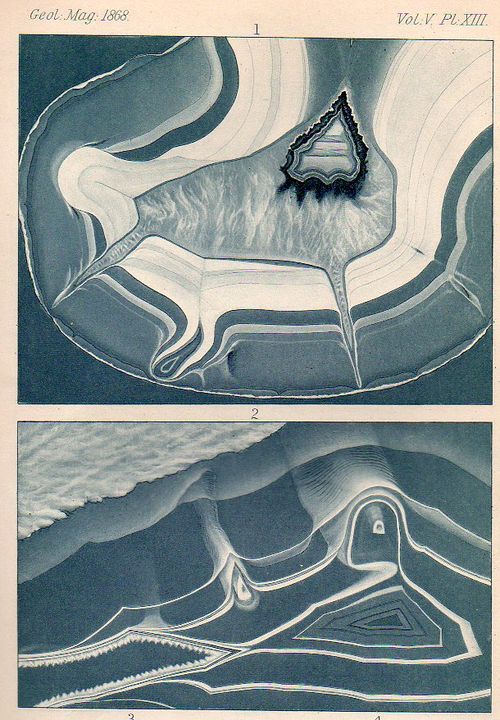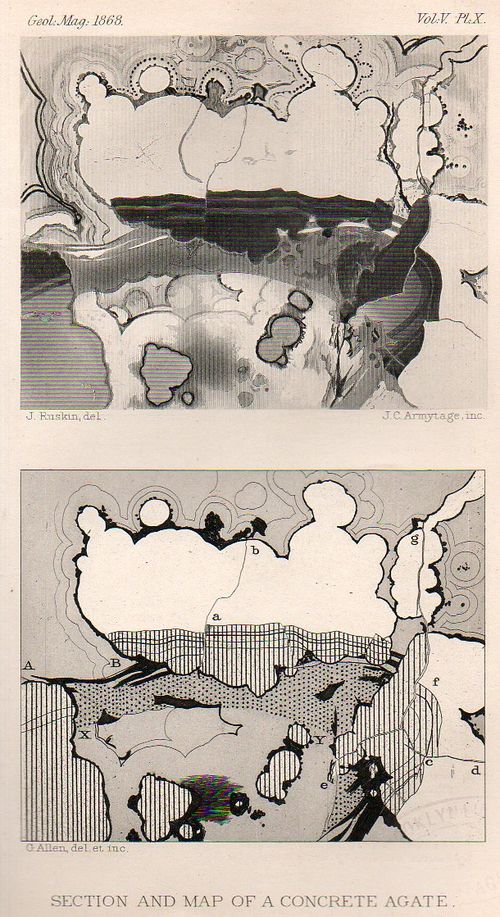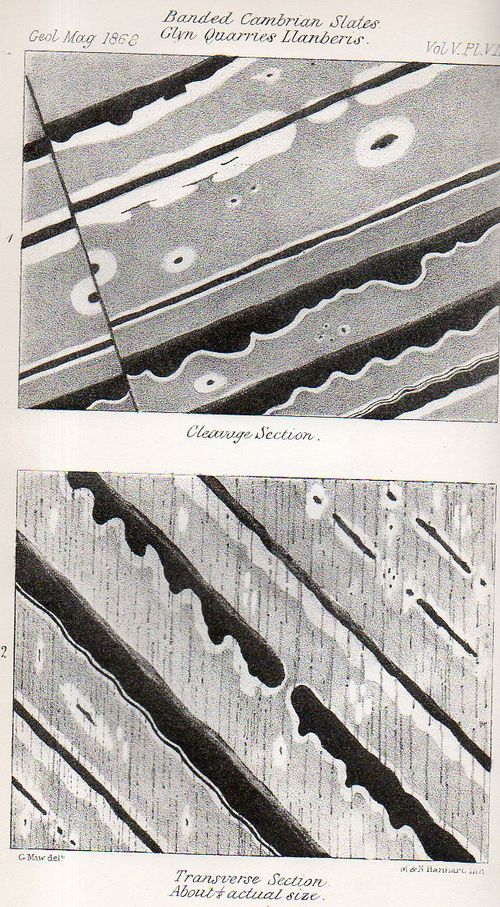JF Ptak Science Books Post 2200
People have been seeing physical and biological objects in agate for thousands of years. You can stare and imagine all manner of things in agate and concretions--they have potentially beautiful cartographic-like nodules, with bright and finely grained microcrystalline silica and found in volcanic and metamorphic rocks.
When Kircher looked closely enough at his agates, he saw hidden objects: sometimes a Madonna, other times animals, and still others--and perhaps more famously--town skylines encased in the rock, as with this example from his Mundus Subterraneus(an undefined edition but ca. 1668):

If you looked close enough at the agate-ified Malabar engraving like Fr. Kircher did you'll probably be able to find a town--and just about anything else.
It is an odd twist of Kandinsky-esque modernism where the recognizable attributes of something that exists in reality and in thought is unrecognizable in the art--on the other hand, the forms in some of these found-art concretions go from completely abstract to something much less so:
First of all in all of my years I've never come across any cartographic-anything that suggested a map of a single rock, let alone a rock section. But there it is, presented in 1868 without a hint of romanticism. A little unfocused concentration will bring this concretion into some sharp relief as a map of some sort. In the top half of the engraving it is even possible to see an elevation and a plan in the two parts of the image--and then, with either more or less focus, the map disappears and you're back into the art of the scientific data transmission.
They are beautiful things, and their design can mean as much or as little as you care or try to see.
Ditto concretions. These have similar capacities for wonder--they're geometrical artwork made of rock embedded in layers of stone, compact masses formed by precipitation of mineral cement...and potentially fabulous things, works of great beauty that could be considered works of pre-modernist art if they were presented in 1912 rather than when these current samples were exhibited in 1868--especially if you looked at the images in sections and detail.






Comments